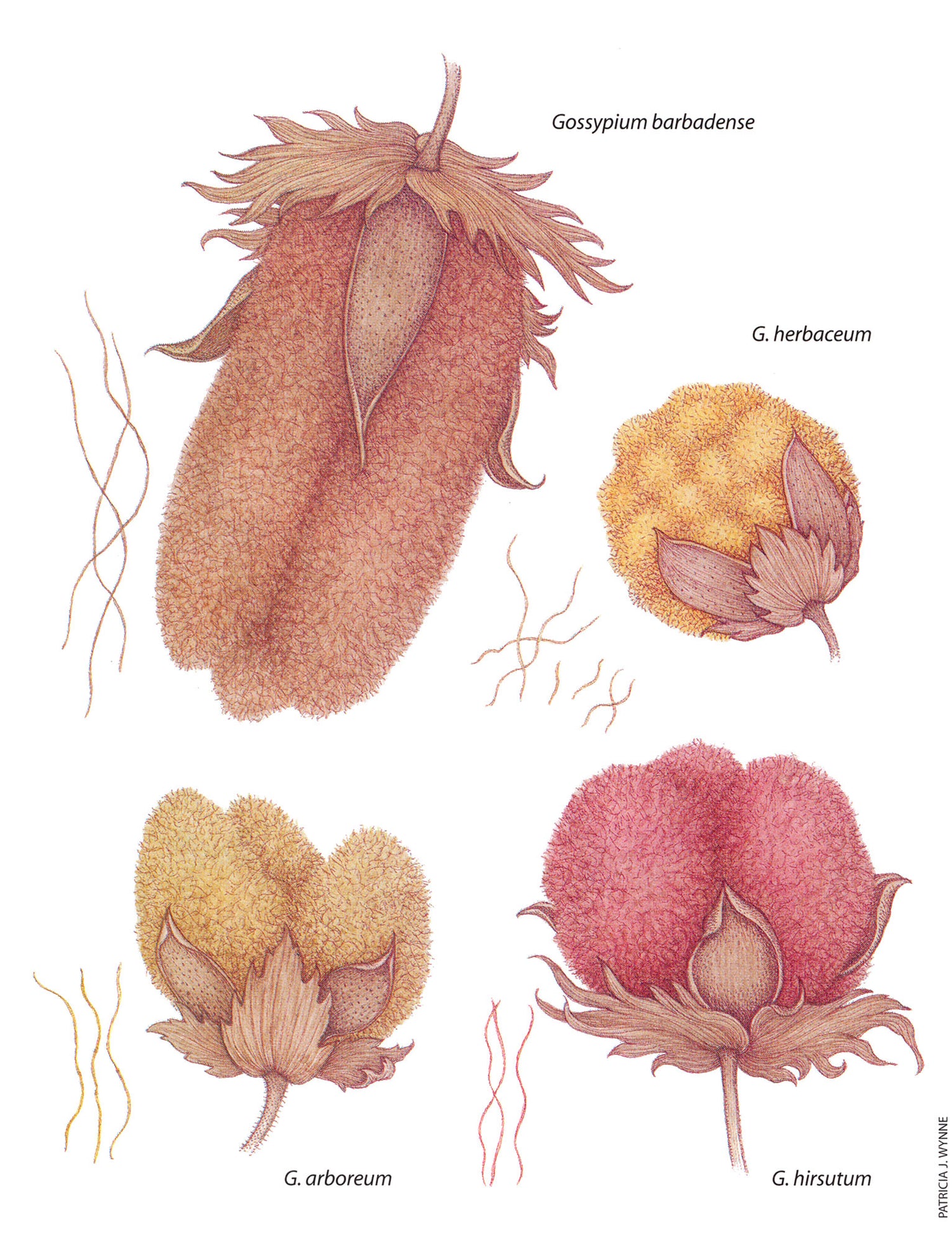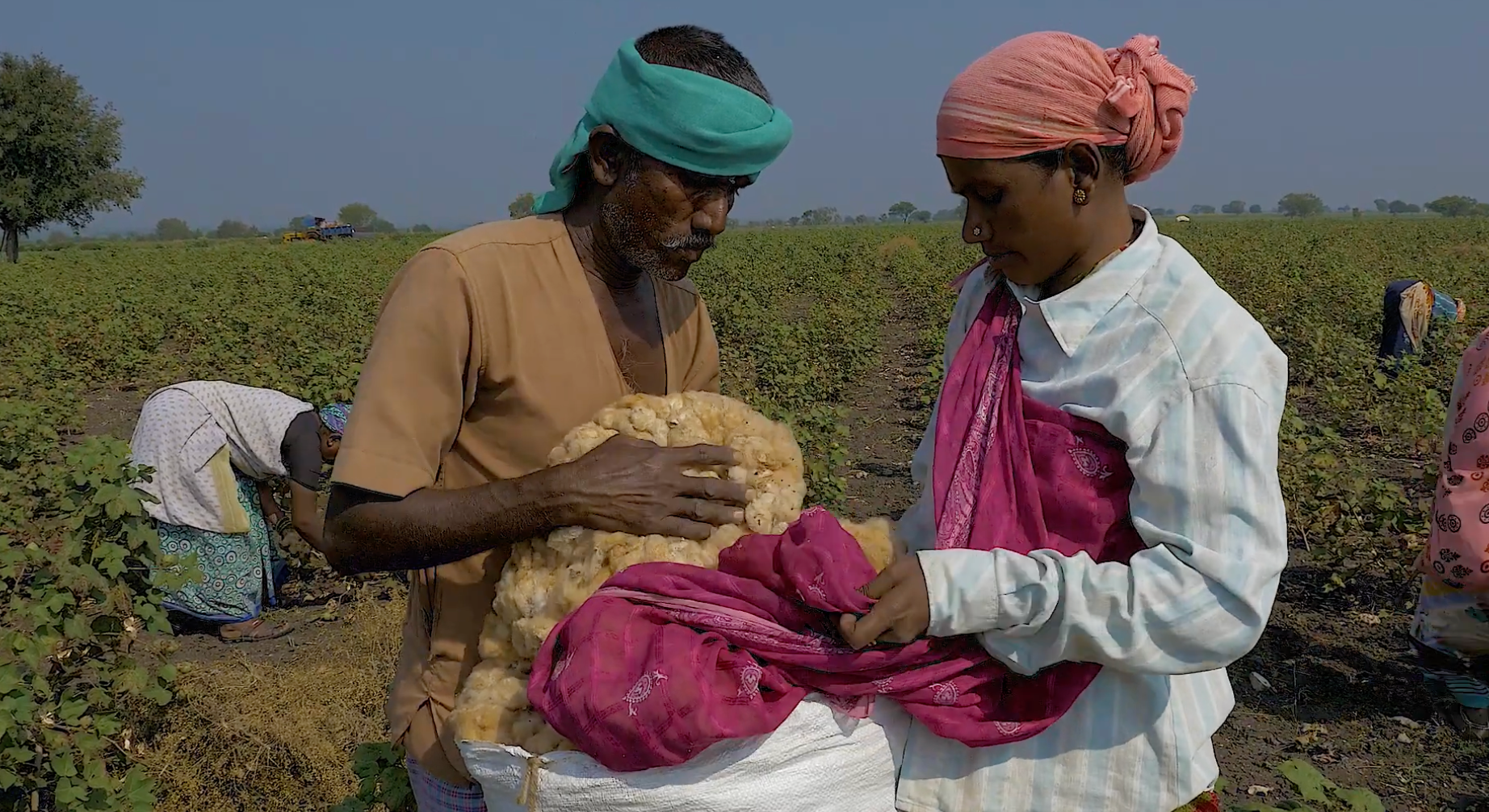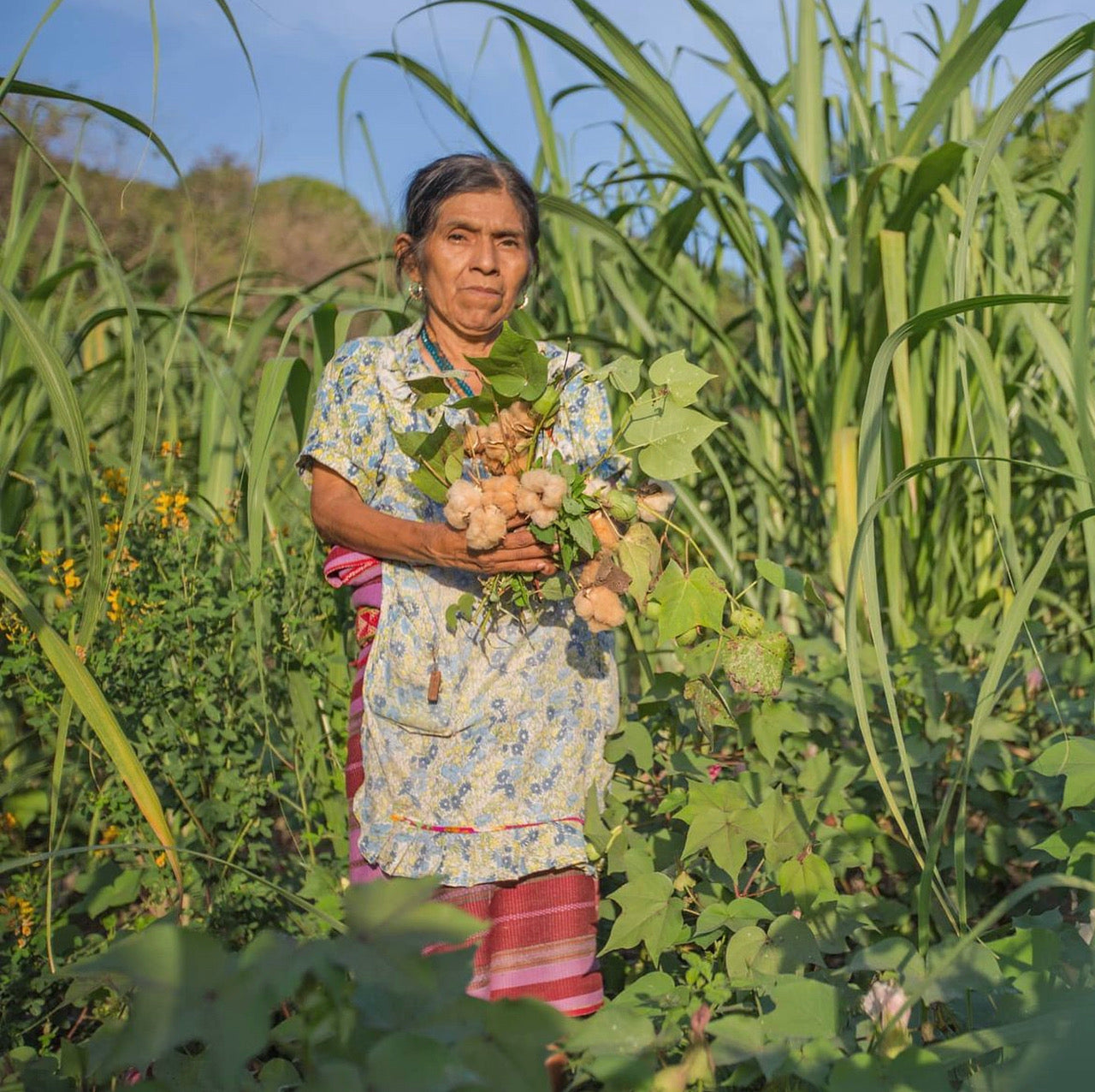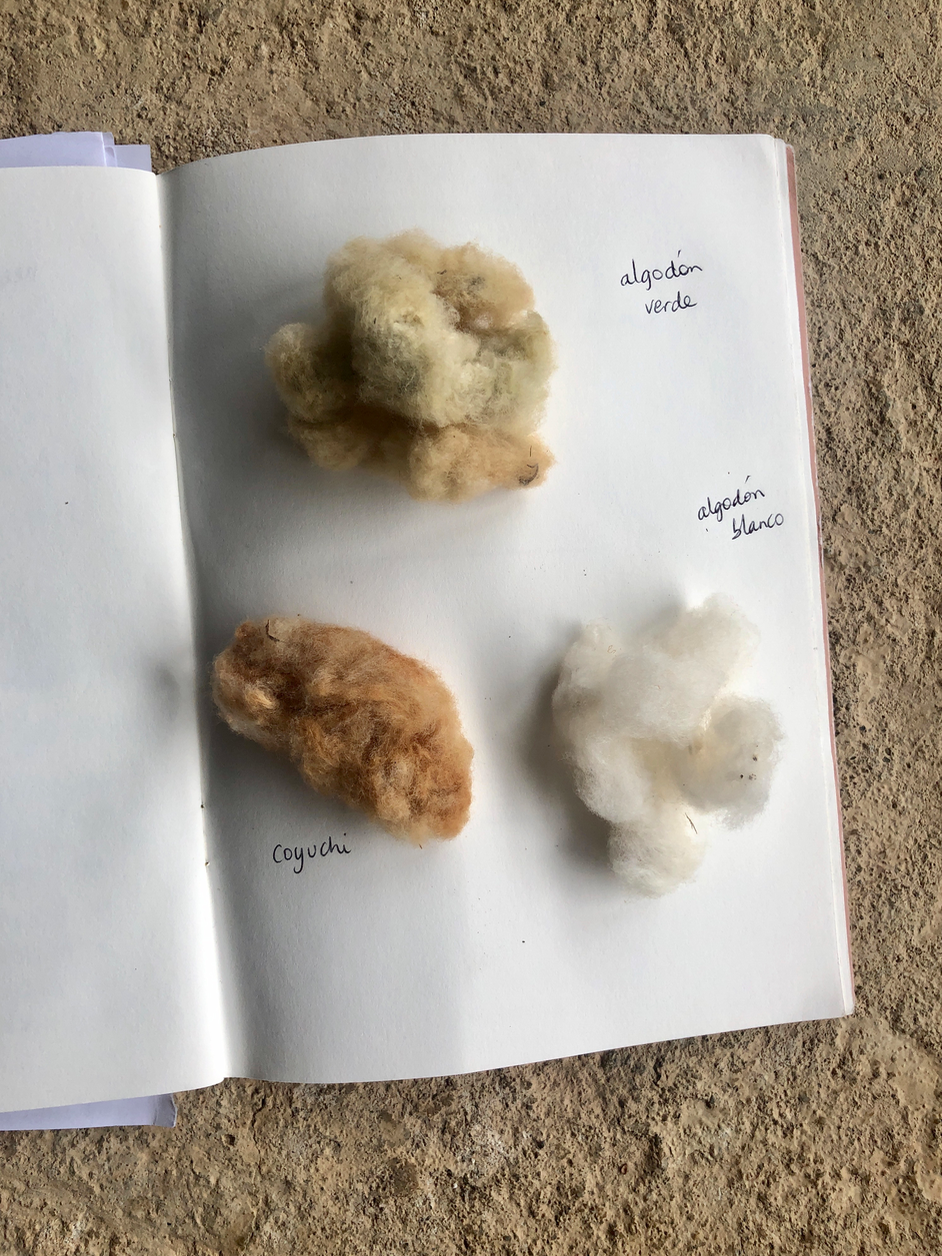ABOUT HEIRLOOM COLORED COTTON
All our products are handwoven with naturally colored cottons which grow in shades of pink, brown, white and green in Mexico, Guatemala and India.



LET’S TALK ABOUT BOTANY
According to botanical studies, Guatemala is the center of origin of Gossypium hirsutum, also known as upland cotton or Mexican cotton, which is now the most widely planted species of cotton in the world (about 90% of all cotton production derives from this species).Gossypium hirsutum grows in two main colors: white and brown. But, brown can be found in many shades: beige, light brown, dark brown, red brown, pink and even green. Sometimes the petals of the cotton flowers are dark-pink around the seeds and light-pink on the outside of the flower. Or green around the seeds and yellow-white on the outside.Species of cotton around the world have different lint lengths. Gossypium hirsutum has medium to long fibers, which makes it easier to spin into yarn and to weave with. However, the fibers of the white cotton are much longer than the fibers of the brown cotton, which may be one of the reasons why white cotton is the most commun cotton used around the world. Other sources also mention that brown cotton was not “pure” enough according to the Spanish when they invaded Central America, so they forced Indigenous people to cultivate only white cotton.
image: Four species of cotton. “The revival of colored cotton” by James, M. Vreeland. 1999
OUR PARTNERS ON THE GROUND
Behind the Hill works with three communities of Indigenous people from Central America. In Mexico we work with two ethnic groups located on the Pacific Coast: the Amusgo people from the State of Guerrero and Mixtec people from the state of Oaxaca. In Guatemala, we work with Mayan Tz’utujil people located on the shore of Lake Atitlan. These three communities each have their own language, tradition and heritage, but the common thread is their respect and love for naturally colored cotton, which is sacred according to their ancestors. Generation after generation, they grow, spin and weave white, brown, pink and green cotton and strive to keep their traditions alive. Usually, naturally colored cotton is used to decorate their handwoven garments. Behind the Hill works directly and constantly with over thirty artisans in six villages in Mexico and Guatemala. Our founder, Maud Lerayer usually travels at least twice a year to the remote villages of our artisans. This connection to our partners on the ground is based on a common passion for the raw materials we work with and a deep respect for Nature.
Since 2022, we also work with a cooperative of cotton growers and weavers in Southern India, where native brown cotton grows organically in very small crops.



WORKING IN HARMONY WITH NATURE
Indigenous people are deeply connected to nature; the two are interdependent. They protect their environment in order to respect their ancestors and secure their future. For the Mayans, the brown cotton is described as “aj ruwach’ulew” which can be translated as “coming from the earth” / “natural”. It is also described as “k’o reumeq’enal” which means that it is loaded with the warmth of the sun.
***
The raw material we work with (the naturally colored cotton) comes directly from Nature. Our collections (and company) entirely rely on each season’s harvest and we can never anticipate the exact shade of pink or green a cotton plant will grow. Which is both amazing and challenging! It’s very important for us to keep our designs simple so that the raw cotton and its different shades actually determine the design. Our Earth Pillow is a good example: the subtle stripes on the fabric are due to the sunlight and rainfall on the cotton flowers while on the tree. The color is kept as is, beautifully imperfect, making each product unique. It’s fascinating to create collections which depend on harvests rather than on trends.
DIFFERENT NAMES FOR DIFFERENT COLORS
Depending on the color of the cotton and the ethnicity of the artisans’ group, the name of the cotton may vary (which is very confusing at the beginning!) A light brown cotton is called COYUCHI in Mixtec, COYUCHE in Amusgo and IXCACO or COYUSCATE in Mayan. Green cotton is simply called VERDE (green is Spanish) by the three cultures. The red brown is called ROJIZO.Mayan Tz’utujil also call the light brown and pink cotton by KAKHY (or KHAKI). The word “Kakhy” comes from the Mayan “Kokow” which means Cocoa.

A cotton that is endangered
“We had all forgotten about this cotton here”, said Grandfather as he caressed the bloom. When he was young, this long-fiber brown, unique to the villages of this area, was still common, cultivated, spun, woven, and worn by hundreds of people. Long ago, the old-timers of Zacatepec also caressed the plants, watching them, listening to them, learning from them, talking to them, making trades: abundance for abundance. They created a cotton like no other, and it was woven into the lives of the people of Zacatepec in many ways.
Text and photograph by Eric Mindling, in Oaxaca Stories in Cloth: A book about people, belonging, identity, and adornment. p. 155
